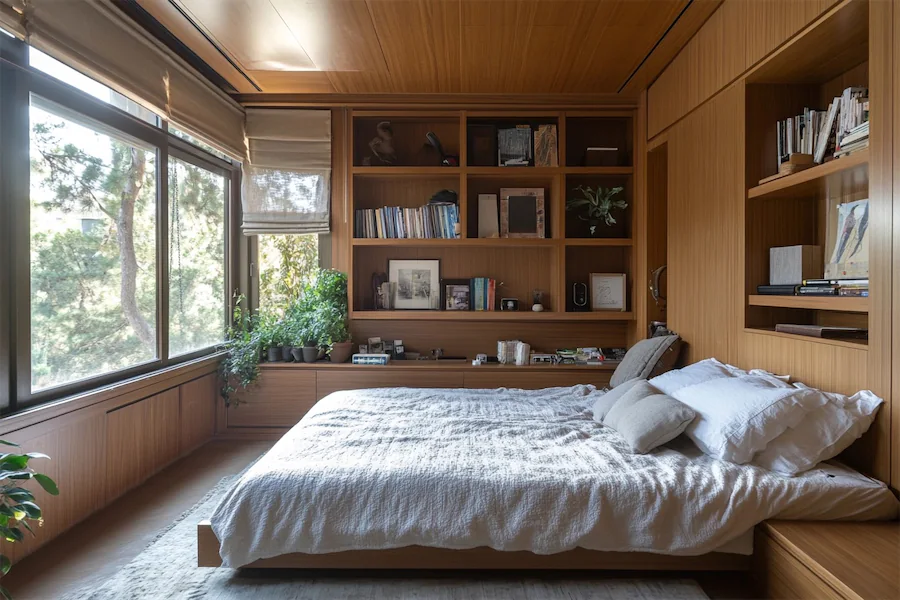A multi-functional bedroom serves multiple purposes beyond just sleeping, integrating areas for work, relaxation, storage, or even exercise within a single space.
Introduction to Multi-Functional Bedrooms
In modern living, especially in urban environments where space is at a premium, bedrooms often double as home offices, gyms, or entertainment areas. Designing a multi-functional bedroom involves strategic planning to ensure each function is accommodated without compromising comfort or aesthetics.
History and Origins of Multi-Functional Bedrooms
The concept of multi-functional spaces has evolved with changing lifestyles and urbanization. Historically, rooms in homes served specific purposes, but as living spaces became smaller, the need for versatility grew. The multi-functional bedroom emerged as a solution to maximize limited space, allowing one room to serve various needs.
Key Features of Multi-Functional Bedrooms
- Versatile Furniture: Incorporate pieces like sofa beds, fold-out desks, or storage ottomans that can serve multiple purposes. For example, a bed with built-in drawers provides sleeping and storage solutions simultaneously.
- Zoned Areas: Define different functional zones within the bedroom using rugs, lighting, or furniture arrangement to create distinct spaces for sleeping, working, or relaxing. This approach helps in maintaining organization and focus.
- Efficient Storage Solutions: Utilize vertical storage, under-bed drawers, or built-in shelves to keep the room organized and clutter-free, essential for maintaining a serene environment.
- Flexible Layouts: Design the room layout to be easily adaptable, allowing for quick transitions between different uses, such as converting a workspace into a guest area when needed. This flexibility ensures the room meets changing needs over time.
- Integrated Technology: Incorporate smart home devices or concealed wiring to support various activities, from work to entertainment, without disrupting the room’s aesthetics. For instance, a hidden charging station can keep devices powered without visible cords.
Applications of Multi-Functional Bedroom Design
- Guest Room and Office Combo: Create a space that functions as a home office during the day and transforms into a guest bedroom when needed by using a wall bed or sofa bed.
- Bedroom and Gym Hybrid: Incorporate compact, foldable exercise equipment that can be easily stored, allowing the bedroom to double as a personal fitness area. This setup promotes health without requiring additional space.
- Children’s Study and Play Area: Design a child’s bedroom to include study nooks and play zones, ensuring a balanced environment for learning and recreation. Utilizing multi-functional furniture can help in maintaining order and maximizing space.
Considerations When Designing a Multi-Functional Bedroom
- Space Planning: Carefully plan the layout to ensure each function has adequate space and does not interfere with others, maintaining a harmonious flow. Using room dividers or curtains can provide temporary separation when needed.
- Aesthetic Consistency: Maintain a cohesive design theme throughout the room to ensure that the multiple functions blend seamlessly without creating visual clutter. Choosing a neutral color palette can provide a unifying backdrop for various activities.
- Privacy Needs: Consider the need for privacy, especially if the room serves as a workspace or guest room, and incorporate solutions like curtains or screens to provide separation when necessary. This ensures comfort for all users.
Conclusion
Designing a multi-functional bedroom requires thoughtful integration of various elements to create a cohesive and versatile space. By incorporating adaptable furniture, efficient storage, and flexible layouts, a bedroom can seamlessly serve multiple purposes, enhancing both functionality and comfort in modern living environments.
